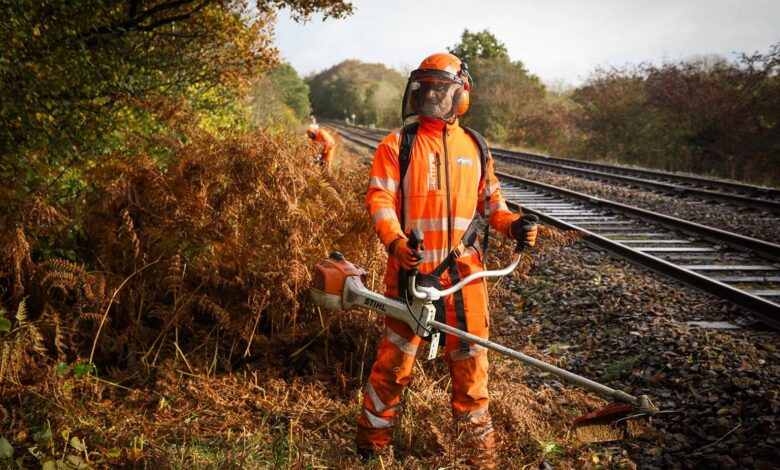Optimizing Vegetation Management for Utility Companies: Strategies and Best Practices

Utility companies face the ongoing challenge of maintaining the delicate balance between ensuring service reliability and preserving the natural environment. Effective vegetation management strategies are pivotal in achieving this goal. Good vegetation management not only prevents service outages but also safeguards ecosystems. This comprehensive guide explores the multitude of approaches that enhance both efficiency and sustainability in the vegetation management plans of utility providers.
Understanding the Scope of Vegetation Management
Effective vegetation management is vital to maintaining the integrity of utility services. It involves a series of planned actions to trim or remove trees and shrubs near power lines and other infrastructure to keep aesthetic landscapes and ensure the safety and reliability of electric services. The scope of this task is enormous – every tree and bush near utility equipment needs careful consideration based on their growth rates, proximity to power lines, and potential to cause service disruptions or safety hazards.
The compliance aspect further underscores this work’s importance. Regulatory agencies often have stringent guidelines regarding the clearance needed around power lines and utility poles. Mapping and managing this vegetation proactively can prevent costly penalties, improve community relations, and, most importantly, prevent power outages that could affect thousands.
The Impact of Technology on Vegetation Management
With technological advancements, utility companies have transformed their approach to vegetation management. GIS and remote sensing equip them with the necessary data for detailed vegetation mapping, critical to planning and executing management strategies. With their ability to reach rugged terrain and gather detailed imagery, drones have become invaluable in monitoring vegetation growth near utility infrastructure. Furthermore, AI platforms can process this data, offering predictive insights that allow utility providers to address potential disruptions preemptively.
The predictive capabilities of AI and machine learning algorithms, in particular, are proving to be a game-changer. They analyze vast amounts of data relating to growth patterns, weather events, and historical outage information to prevent service interruptions. As a result, utility companies can prevent outages and ensure safety while decreasing maintenance costs over time – a win-win for providers and consumers alike.
Risk Management and Preventive Strategies
Risk management is the strategic core of vegetation management. It is all about identifying high-risk areas where trees will likely clash with power lines, possibly causing outages or even sparking wildfires. Integrating meteorological data allows utility companies to anticipate and mitigate these risks. For instance, monitoring wind patterns helps determine where trees might fall during a storm, allowing preemptive trimming or removal.
These preventive measures also include regular pruning and selective removal, which are strategically implemented to minimize risk. Well-planned planting is another preventive strategy that contributes significantly to long-term risk management. Utility companies can reduce the frequency and extent of maintenance work required by selecting slow-growing and shorter vegetation species for areas around power lines.
Collaboration and Communication: Engaging with Communities
Effective vegetation management is as much about community relations as it is about practical arboriculture. Utility providers must distinguish between operational needs and community expectations, fostering clear communication and transparency. By involving residents and local organizations in discussions about management plans, utilities can mitigate resistance and even enhance community cooperation. Educational efforts include explaining the practical reasons for vegetation management and engaging in a dialogue about the benefits beyond reliable utility services—such as improved public safety and conserved biodiversity.
Cost-Effective Vegetation Management Approaches
Finding a cost-effective solution for vegetation management is a primary concern for utility companies. Outsourcing allows providers to reduce initial capital outlays and turn fixed costs into variable expenses, providing financial flexibility. Conversely, developing an in-house team may represent a more significant upfront investment but can result in longer-term consistency and control. Furthermore, non-traditional methods like targeted grazing or environmentally safe herbicides could provide innovative and sustainable solutions that are both eco-friendly and cost-saving.
Legislation and Policy Framework Affecting Vegetation Management
The regulatory landscape for vegetation management is both complex and changing. Utility providers must keep up with various federal, state, and local regulations impacting vegetation management practices. Navigating these regulations requires a comprehensive understanding of the law and ongoing communication with policymakers. Companies actively engaging in policy discussions can help shape legislation supporting innovative, sustainable vegetation management practices while meeting community needs.
Incorporating Sustainability Into Vegetation Management
Sustainability in vegetation management is not just a buzzword; it’s an essential strategy for modern utility companies. Reintroducing or preserving native species can enhance the local ecosystem’s health, and selective planting can reduce the need for future trimming. Utilities can improve their environmental impact by investing in these practices while ensuring the safe and reliable delivery of services to customers.
Best Practices for Developing a Vegetation Management Plan
An effective vegetation management plan is built upon several foundational best practices. To start, clear and measurable goals must be set. From there, a combination of conventional techniques and innovative technologies should be tailored to the needs of the local environment and community. Adherence to best practices from industry experts can ensure that tree planting and vegetation management near power lines are carried out responsibly and sustainably. By aligning these practices with the latest research and community feedback, a utility company can craft a vegetation management plan that is both effective and forward-thinking.
Utility companies can forge a path toward optimized vegetation management by investing in the right mix of technology, preventive strategies, community involvement, and sustainability. This article outlines these methods and provides a roadmap for utility companies looking to innovate and improve their vegetation management practices while keeping ecosystems and communities as a central focus of their strategies.



